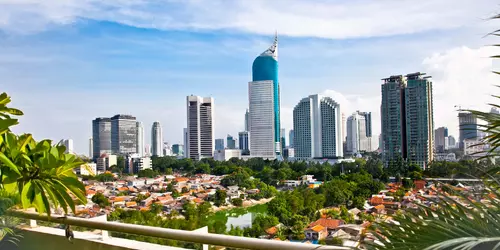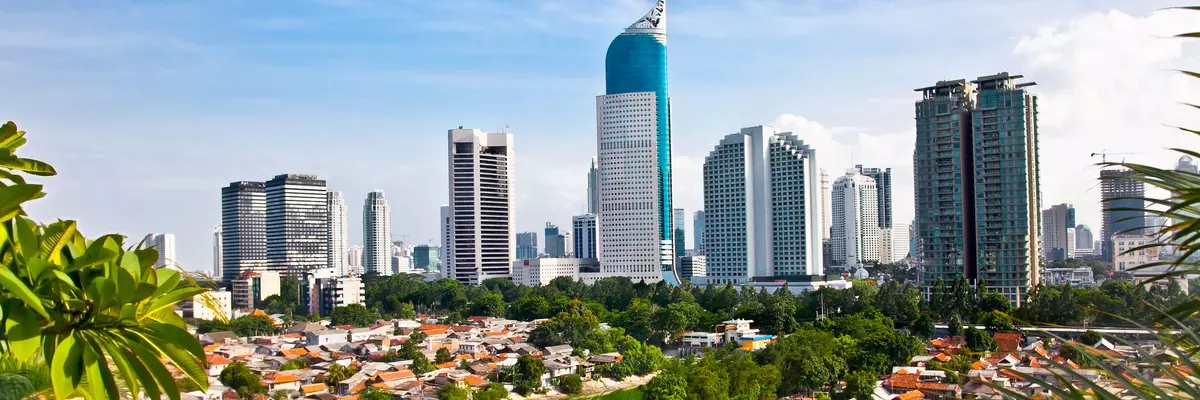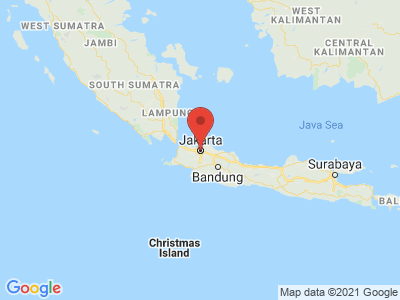Climate Table Jakarta
Jan | Feb | Mar | Apr | May | Jun | Jul | Aug | Sep | Oct | Nov | Dec | |
|---|---|---|---|---|---|---|---|---|---|---|---|---|
| Max. Temperature | 29° | 29° | 30° | 31° | 31° | 31° | 31° | 31° | 31° | 31° | 31° | 30° |
| Min. Temperature | 24° | 24° | 24° | 24° | 25° | 24° | 24° | 24° | 24° | 24° | 24° | 24° |
| Sun Hours | 6 | 6 | 8 | 8 | 8 | 8 | 9 | 10 | 10 | 9 | 8 | 7 |
| Water Temperature | 26° | 27° | 28° | 29° | 28° | 28° | 28° | 28° | 27° | 28° | 28° | 27° |
| Rain Days | 18 | 17 | 15 | 11 | 9 | 7 | 5 | 4 | 5 | 8 | 12 | 14 |
The climate year of Jakarta
Jakarta is located about eight meters above sea level and is populated by people of various descent. The population is about ten million. Jakarta is located on the island of Java and is surrounded by many small islands. which also belong to the urban area. In the outskirts, agriculture is the main source of income. Several active volcanoes and annual floods during the rainy season make life on the island of Java difficult. Jakarta looks back on a long and eventful history. After Indonesia was a Dutch colony for over 300 years, the Japanese took over until 1945. It was not until 1945 that Indonesia gained political independence. Nowadays Jakarta is a city of contrasts. Prosperity reigns in the city center, which is dominated by universities, parks, museums and modern buildings. The outskirts are characterized by slums and poverty. Due to the extreme overpopulation, Jakarta is also a stronghold of crime and air pollution. But tourism is also promoted in the metropolis of millions. In recent years, modern hotels, restaurants and museums have been built that are second to none.
General information about Jakarta
Many museums in the city invite locals and tourists to visit. The National Museum, for example, is one of the best-stocked collections in Southeast Asia. In this museum, the country's history, culture and craftsmanship can be admired. Geology is explored in depth, as well as rites and customs of the people. Another attraction of the city are the many old buildings from the colonial period. The largest amusement park in Southeast Asia, the "Taman Impian Jaya Ancol", is also located in Jakarta. Integrated into this is an art market where traditional handicrafts can be purchased. The Marine National Park is also worth a visit. In a dolphinarium daily shows are shown, which inspire millions of spectators every year.
Tourism Jakarta
Jakarta is located in the tropical climate zone. There are tropical temperatures all year round and heavy rainfall during the monsoon. Only from June to October the rainfall decreases somewhat. Due to its geographical location, there are floods every year, which inundate the city of over a million inhabitants. The lowest temperatures, but also the heaviest rainfall is experienced in Jakarta from November to January. Because of the climate on the island of Java, the humidity is very high and the air is usually hazy. Because of this and because of the enormous overpopulation, the air pollution is very high. Nevertheless, the city of millions is worth a trip.


